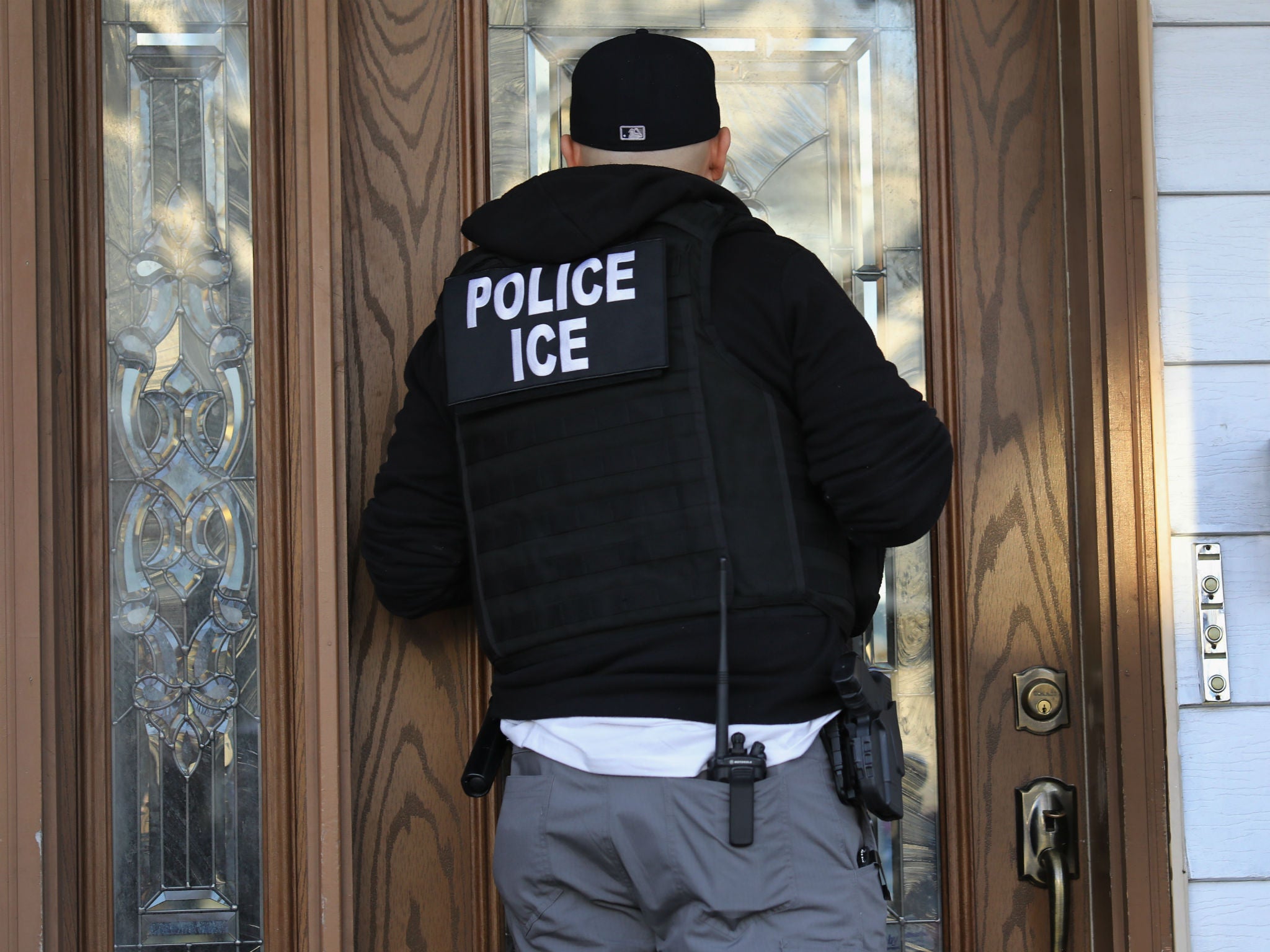ICE handbook for undercover agents details ability to 'induce crime from suspects'
The 227-page manual instructs agents on the particulars of undercover investigations

Your support helps us to tell the story
From reproductive rights to climate change to Big Tech, The Independent is on the ground when the story is developing. Whether it's investigating the financials of Elon Musk's pro-Trump PAC or producing our latest documentary, 'The A Word', which shines a light on the American women fighting for reproductive rights, we know how important it is to parse out the facts from the messaging.
At such a critical moment in US history, we need reporters on the ground. Your donation allows us to keep sending journalists to speak to both sides of the story.
The Independent is trusted by Americans across the entire political spectrum. And unlike many other quality news outlets, we choose not to lock Americans out of our reporting and analysis with paywalls. We believe quality journalism should be available to everyone, paid for by those who can afford it.
Your support makes all the difference.An internal handbook for Immigration Custom and Enforcement (ICE) undercover agents, and obtained by The Independent, gives a glimpse into how far an ICE undercover agent could go within the fullest extent of the law, including the ability to “induce” criminal activity from subjects.
Department of Homeland Security (DHS) and ICE’s Office of Investigation’s “Undercover Operations Handbook” dated April 14, 2008 details the parameters of ICE undercover conduct. Although the document is out of date, it is believed to have been in use for eight years between 2008 and at least 2016 shows a clear precedent for a wide-reaching investigative power
ICE spokesperson Matthew Bourke said that they would not comment “on leaked documents, or training and tactical enforcement procedures that are considered law-enforcement sensitive.”
The 227-page manual instructs agents on the particulars of undercover investigations. Freedom of Information Act documents available on the website GovernmentAttic.org indicate that the undercover handbook appears in a table of contents for their 2016 Special Agent’s Manual, listed at number 38, just before the Witness Security handbook at the very end.
In the outline of the purpose and scope of the document, the handbook states that “the policies in this handbook will provide the greatest degree of flexibility to conduct undercover investigations within the limits of the law and applicable regulations.” But even where one might imagine hard limits would exist, the document provides wiggle room.
Agents are not generally authorized to “participate in any activity that would constitute a crime,” except when “justifications” exist. Aside from the prevention of death or bodily injury, these justifications include “the need to obtain information or evidence necessary to the success of an investigation,” or for the need to “establish or maintain credibility of a cover identity.”
Agents are also not generally allowed to suggest or “induce” criminal activity, to avoid entrapment. “Entrapment,” is a legal defense that must be, according to the handbook, “vigorously avoided to ensure that criminal prosecutions are not aversely affected.” According to the handbook, an agent will not “initiate, instigate or induce others to initiate any plan to commit criminal acts except in accordance with section 3.4.1” Yet according to section 3.4.1, exceptions to the rule may be made in various circumstances, particularly when determining “reasonable” suspicion of suspects, and according to the document, these parameters for suspicion are entirely internally regulated within ICE.
Legal experts were clear to signal that this conduct is fairly common when concerning any form of undercover work, and especially for any proactive policing where national security is involved.
According to Dr James B Jacobs, Professor of Constitutional Law at New York University and director of the Center for Research in Crime and Justice, this tactic is common among law enforcement, especially in cases regarding terrorism, drugs and sex solicitation. “It comes up a lot in the terrorism cases, when a suspected terrorist is approached by an FBI agent undercover to explore how serious the target is and how far he might go.” he said. “And [the entrapment defense] is almost always unsuccessful. At least in the terrorism area.”
Jacobs explained that he had never heard of a case of entrapment with regards to an immigration case. “The only scenario that comes to mind would be if ICE officers were investigating a trafficker” he said.
This scenario also occurred to Dr James Kenney, a professor at the John Jay College of Criminal Justice at John at CUNY. “I would assume that ICE, FBI and DEA, but especially ICE, would be involved in [undercover] activities. One of the great problems particularly on the southern border are individuals who for a fee smuggle.”
But the legal parameters of who could be targeted may extend well beyond smugglers and traffickers.
“NGOs usually skirt fairly close to the edge,” said Dr Kenney. “The process of providing support to people who are being smuggled or crossing in the desert could easily be construed as providing support to the smuggling operation and I would think that they would be at great risk of being swept up in this.”
Join our commenting forum
Join thought-provoking conversations, follow other Independent readers and see their replies
Comments